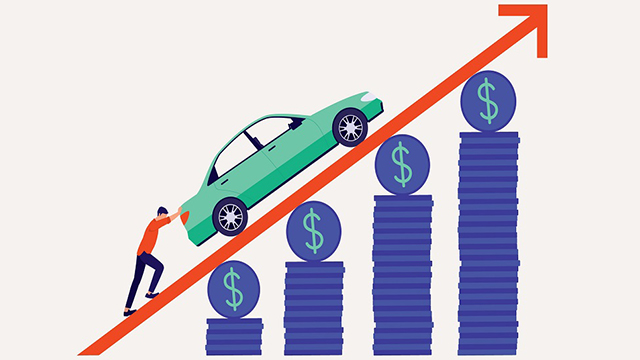FAU Researchers: Fed Taking No Action to Offset Inflation
By Paul Owers | 03/31/2022
Tags: Economics | Monthly-Inflation-Report | Phil-Smith | Press-ReleasesCategories: Research
Wages Won’t Go as Far if Prices Remain Elevated, Economist Says

The real value of wages for workers across the nation is likely to fall even further as the Federal Reserve shows no signs of neutralizing worse-than-expected inflation, according to researchers at Florida Atlantic University.
In FAU’s Monthly Inflation Report, associate professor William Luther, Ph.D., and student Morgan Timmann forecast prices will be roughly 11.8 percent higher in January 2023 than they were in January 2020, just prior to the COVID-19 pandemic. That amounts to a continuously compounding annual inflation rate of 3.7 percent since January 2020. Their forecast is based on Federal Open Market Committee (FOMC) member projections, which FOMC revised upward in March.
In December 2021, the FOMC projected prices would be just 9.4 percent higher in January 2023 for a continuously compounding annual inflation rate of 3 percent.
The Fed is tasked with maintaining price stability in the United States and aims for prices to grow at just 2 percent on average. Because inflation has exceeded 2 percent over the past year, the Fed would need to bring inflation down below 2 percent to hit its average inflation target. Luther says the Fed is unlikely to do so.
“FOMC members are very clearly projecting that they will take no action to offset the high inflation observed over the last year, that inflation will remain above the 2 percent target for the next three years, and that prices will remain permanently elevated,” he said.
Inflation remained low and relatively stable over the past three decades, causing many Americans to grow accustomed to adjusting wages and prices at roughly the same rate each year. Now, inflation is much higher.
The Personal Consumption Expenditures Price Index, which is the Fed’s preferred measure of inflation, grew 6.1 percent from February 2021 to February 2022. It has averaged 3.7 percent since January 2020. Workers must now renegotiate their wages if they are to keep from falling further behind, Luther said.
Next month’s price level likely will be even higher, Luther said. Russia’s invasion of Ukraine, which started at the end of February, has further constrained supplies.
Higher inflation means a worker’s wages will not go as far, Luther explained.
He said to consider a car that cost $50,000 in January 2020. If the Fed were to hit its 2 percent target, that car would cost $53,060 in January 2023. If inflation averaged 3 percent, as the Fed projected in December 2021, that car would cost $54,700 in January 2023. At 3.7 percent, as the Fed is now projecting, it would cost $55,900.
“We’re not paying more because the car is any better,” Luther said. “It’s the same car. Rather, we’re paying more because the dollars we’re spending are worth so much less.”
-FAU-